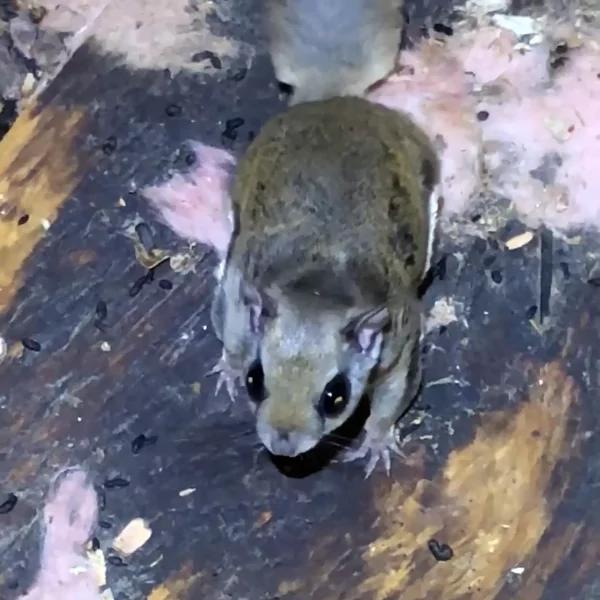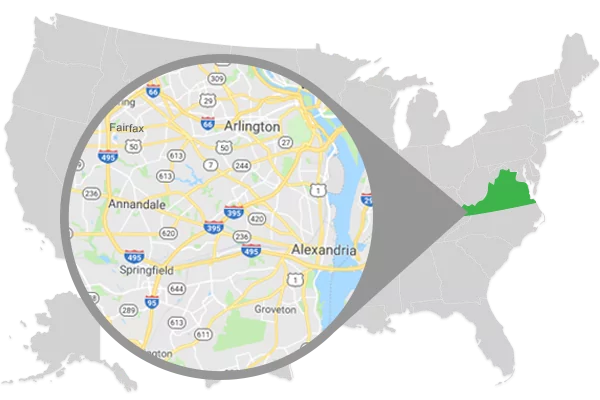
What are flying squirrels and how do they fly?
Flying squirrels are small mammals. They are 10 to 12 inches long and they don’t actually fly, but rather glide through the air from tree to tree, covering a distance of up to 300 feet at one time. The position of their flight is determined by their wrist bone and they use their fluffy tail to stabilize them while in flight and it acts as an air brake. Flying squirrels eat fruits, seeds, nuts, fungi and bird’s eggs that they gather at night, since they are nocturnal. Their predators are tree snakes, owls, raccoons, feral cats, bobcats, coyotes, fishers and martens. In the wild, flying squirrels will live for about six years, whereas in captivity, they can live for up to 15 years. Their mortality rate is high because of their predators and they are prone to getting a variety of fatal diseases.
Flying squirrels prefer to live in a forest environment because it allows them to glide from tree to tree. Flying squirrels have two litters a year, one in the spring and the other in the late summer. Typically, they have anywhere from two to six babies in each litter, but on average two. If you have flying squirrels in your home during the spring months or late summer, it is likely that the mother squirrels are nesting with their babies.
Do flying squirrels hibernate?
Flying squirrels, at least Northern flying squirrels do not hibernate and are actually more active during the winter time because they are used to cold weather. Southern flying squirrels are more prone to hibernating, because they have less of a tolerance to the cold than Northern flying squirrels.
Can flying squirrels have rabies?
Like many other wild animals, flying squirrels can carry a variety of different diseases. Rabies however is not a disease that they have been known to carry. Flying squirrels are known to carry typhus that they can pass on to people, additionally they have mites, lice, fleas and other parasites. The transmission of disease from flying squirrels to people is rare, but people should still proceed with caution when around them. If you are near a flying squirrel, it is important to remain at a safe distance and remember they are wild animals and can be unpredictable in their behavior and actions.
Where do flying squirrels nest?
Flying squirrels are found in many states across the United States in forests and woodlands but might also make their homes in suburban areas. They will often take over nests, burrows and holes made from other animals such as birds. They also might make their way into your attic space where they will urinate, defecate, chew on wood and wires and otherwise wreak havoc. It might be difficult to know you have flying squirrels because of their nocturnal nature, so the best thing to do is to have a wildlife inspection done on your home.
How do flying squirrels get into your house?
Flying squirrels can get into your house in a variety of different ways. One way flying squirrels can enter your home is through holes and cracks in the home. If there are loose shingles in the roof, they can make it easy for the squirrels to gain access to your attic space. Flying squirrels may also gain entry in your home through windows, chimneys, vents and open screening.
What are signs of flying squirrels in the home?
Some signs of flying squirrels in the home are smelling a strong urine odor, seeing chewed wires, gnaw markings and ruined insulation. Flying squirrels will tear at insulation and use it for their nests to keep warm and to have their babies in and keep them warm too. Flying squirrels prefer blown-in cellulose insulation to fiberglass, because the cellulose doesn’t make their fur and skin itch like fiberglass does. It can be difficult to really know if you have flying squirrels in your attic if you don’t go into your attic very often. If you don’t see the damage they create or smell their strong odor, you might be able to hear them. Because they are most active at night, they
How to get rid of flying squirrels?
Removing flying squirrels from your home can be challenging because they are known for being great escape artists. The most proven effective way of getting rid of them from your home is through one or more of our methods of humane removal. The wildlife technician that comes out can determine the best method of removal for the flying squirrels in your home.
Flying squirrel prevention for Fairfax, Alexandria and Arlington, VA
Once you have your flying squirrel problem taken care of, it’s important to continually take care of your home to prevent a recurrence. Some preventative measures you can take are getting a chimney cap for your chimney. The cap will allow the smoke to be released but will prevent the squirrels from going inside. Another preventative is to get cracks and openings sealed, shingles and roof repairs, check for holes in walls and downspouts and properly dispose of and seal up food. Flying squirrels much like other animals are drawn to your property because it offers a food source and a place that offers shelter and can be a safe place for the flying squirrels to have and raise their babies.
Flying squirrel removal in Northern Virginia
If you need flying squirrel removal services in Fairfax, Alexandria, Arlington or other parts of Northern Virginia, you should call a professional wildlife removal company. Here at Summit, we have 30 years of experience in the field and will do our best to solve your problem. The first step to finding a solution for your animal issue is to give us a call and schedule a free and comprehensive inspection where we will also give you the estimate for how much the services will cost. For more information about flying squirrels and how we can help remove them from your property, or to schedule your free estimate for pest control, animal removal, waterproofing, insulation or home remodeling needs, contact us today.












